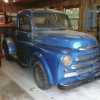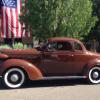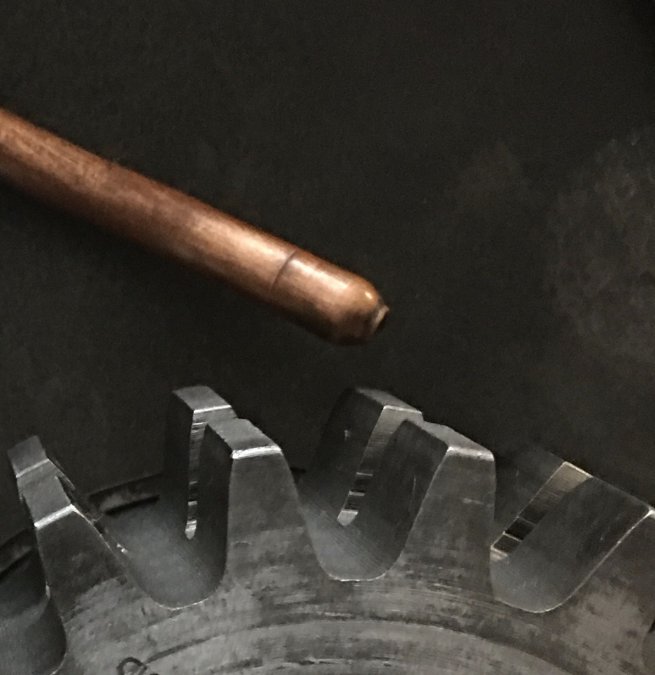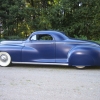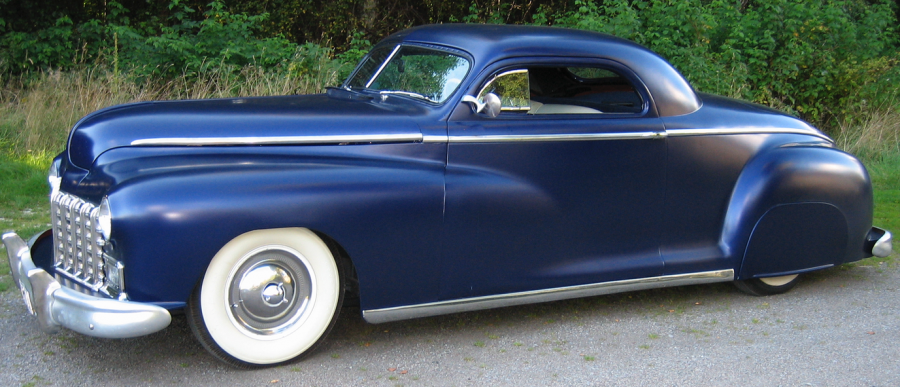Leaderboard
Popular Content
Showing content with the highest reputation on 02/13/2019 in all areas
-
I'm sorry if someone already posted this, but the photo is just amazing, as are others on the Petrel website. This tractor has been under the sea for 75 years! The Hornet was discovered a couple weeks ago at about 18,000 feet under. It's amazing how well preserved it is. There is one where someone's jacket is still stuck in a hatch. Here is the URL: https://www.paulallen.com/Indepth/Petrel/discoveries/uss-hornet-cv-8.php3 points
-
3 points
-
After thinking about relocating the upper front shocks on my car for the past few years I bit the bullet and with a mate recently relocated the upper shock mount on my Oz 1940 Dodge, this car uses the 1940 Plymouth chassis and wheelbase.......my car is a hotrod, using vented front discs and an Austin 1800 narrowed 9" rack & pinion so none of those things will be much help to those in the USA however we used Monro Matic shock absorbers that had the following numbers on them........PK14 and 1009, these shocks had an extended length of 12 & 1/2 inches and a compressed length of 8 & 1/2 inches....they are VERY short shock absorbers and use the large rubber eyes at each end.........the front end of this car uses 1955/56 Ford coil springs with one coil removed and we were able to make upper shock mounts from 3/16th plate that wrapped around the top edge of the chassis with a pair of brackets of the same 3/16th material projecting out between which the upper shock eye fitted..........the upper mounts were bolted to the chassis using 5/16th x 3/4" long high tensile UNC bolts, the bolts screwing into short plates with welded nuts inserted via an access hole against the rear of the outside and upper chassis rail..............I also replaced the heim jointed front sway bar links that had worn excessively with new greaseable heim joints and replaced both upper & lower rebound rubbers.............the attached pics hopefully may help others, my original intention was to use a pair of Dodge pickup truck front shock mount brackets however as the Munro shocks were available they allowed the manufacture of shorter bracketry...............and the blue noellothane sway bar bushes shown in some pics were replaced with better fitting pieces................I haven't had the opportunity to take the car out for a drive as yet as I have a few other jobs being done at the same time and am awaiting the return of some parts from the chrome platers, the steering wheel collapseable section being the main piece........hopefully in a week or two............happy to answer any questions if any.........Andy Douglas.2 points
-
I'm not sure where you are getting your information but you are comparing modern engines with basically antique/obsolete technology. I agree that with modern vehicles it is very difficult to improve on the stock intake/exhaust because there was actually "engineering" involved with their design. In the earlier years these engines were engineered just enough (not much) to meet target specifications. Once met no further engineering was needed. Even the factory offered upgraded intakes and exhausts among other items during the muscle car years and even before. Examples would be the Super Stock Dodges, 300 Hemis, GTO's........ Now for late models - In the late 90's Ford lowered the hood lines of the Mustang, by doing so the Cobra intake was pancaked and the car was released to the public without meeting it's advertised HP. Subsequently there was a recall that replaced the intake with a hand ported one and replacing the exhaust with a more free flowing system, thereby increasing the HP to the advertised amount, so it does improve things. Technology improves over time also, look at what people called high performance cars in the 80's verses today. A 81 fuel injected vette made 150hp in California, now 600+ and better mileage / driveability also. When I was racing Pontiacs in the 90's, if I dropped the hammer at max RPM as you state above I would have left parts at the lights. Please understand multiple carbs, especially on these long Siamesed port engines, do make improvements all around with the only downside is a bit more tuning. I have done it and witnessed it first hand, you?2 points
-
2 points
-
The big flatheads in heavy duty trucks had two single bbl carbs and split exhaust for a reason...these trucks were not speed demons but needed to produce power at launch throughout the engine speed range...these carburetors were designed and adjusted to work well this way. And it's these adjustments that are key to making the dual induction work. With increased fuel consumption, fuel economy will begin to drop, but properly adjusted induction with increased exhaust will generate more power to the pavement. As a side note, I recently upgraded the exhaust on my Dodge Cummins from 3.5" to 4"...after several thousand miles, I could see that my economy had decreased by about 1 mpg, but passing at speed rarely required a downshift as putting my right foot into it motivated that beast very quickly...LOTS of fun that way2 points
-
Got an update. I called a couple of other machinists and they couldn't tell me how much interference there should be. I even found a copy of a 2006 edition of the AERA connecting rod manual, and while it provides this kind of info for some engines, it doesn't for our flatheads. I then called Sealed Power yesterday and they told me the bushings need to be installed with about 0.004 - 0.0045" of press fit. I thought the rep didn't know what he was talking about and so did my machinist. That sounds like a ludicrous amount of interference. So I dropped into another machine shop - a big outfit - and talked to their head machinist, who has been doing engine machine work for 40 years, and he said that was about right for bronze bushings, which is what these are. I thought they were going to be steel-backed bronze, based on the description on NAPA's website, but they are bronze all the way through. I know this because I got a hold of three different parts (three different part numbers - one standard outside diameter and two different oversizes) and looked at the parts myself, and they are bronze. Anyway, the machinist said if the interference is only 0.0015" or so, which is what I was thinking, then the bushings will "fall" out. He also said burnishing them to expand them out against the rod bore is the best way to do it, but not many shops have the setup to do this, but he does. He also said such a large press fit is not needed for steel bushings, nor is burnishing. I got the impression from him that steel bushings only need about 0.002" interference, bit I'm not sure how accurate that is.Further confirmation of the tight press fit for bronze bushings is the fact that when I measured the three different bushings I got a hold of, the ODs were all 0.004 - 0.005" larger than advertised online (again by NAPA as well as other sources). I guess when the OD is stated, they mean the final installed OD, which is essentially the size of the rod ID, but that was not clear from the specs they provided. I think I'm starting to understand how this works, though.Since the machinist I spoke to this morning really seemed to know what he was talking about, I went and picked up my rods from my previous machinist and am planning to take them to this new guy.I'm posting this in hopes it will help someone else at some point, maybe even me2 points
-
2 points
-
Just joined this great forum. I have a '40 DeSoto Deluxe 2 door sedan that my great grandfather owned. It doesn't run as the engine is seized. Has a 3 speed trans. Car is complete, showing 29k on odometer. It hasn't been registered since 1964. My goal is to get it running and drive it. So I'll be on here learning about this cool old car. Thanks1 point
-
What concerns me, what color shag carpeting you going with? I kinda have a issue with green, you go brown and I am good. orange and we need to talk1 point
-
You can sometimes find NOS carbs on Ebay. I was lucky enough to do so a few years ago. Price was around $125 +/- for a fluid drive B & B that had never been mounted. Got to be patient though and ready to pull the trigger. Jeff1 point
-
I swapped all the manifold studs on my engine, and yes I did install them myself. I can´exactly remember how many of them are breaking through into the water jacket. Maybe 2 or 3 (?) But this easily can be seen when the specific stud is out. I don`t know, if leakage at that bolts is a common problem. Never had a leak there since the rebuild 5 years ago and regularly use. Good preparation and the right stuff is the basic for success in my opinion. Ah, and I think it is more difficult to get an installed + leaking stud leak-free. But again, ask 5 people, get 5 answers ... Just my experience ...1 point
-
Actually you would be better off with longer rods. If you don't have new pistons yet, have some made with a slightly higher wrist pin + you get a modern piston / ring design. If I ever go through my 230, I'll install 218 rods with shorter more modern pistons. On edit: assemble 1 cylinder and see how far the piston actually comes out. Some of these engines don't come all the way to the deck, might be ok with fly cutting the piston a little???? But then you still have a 4 ring pack long heavy piston.1 point
-
Im not sure where you are doing your research. But on these engines with siamesed intake ports you are "full of misinformation " to say it nicely. A single carb is the least efficient method of fuel distribution with a design such as this. Cyls 3 and 4 run rich and cyls 1 and 6 much leaner. Now aint that fuel distribution efficiency? Oh its adequate, but its not more efficient at all. the most efficient is a carb for each intake port all 3 balanced to provide the best fuel distribution and atomization for each set of cylinders per port. Multi carbs good only at high speeds and WOT? I think you missed the boat on this. They are great in all ranges on this engine. Better fuel distribution to all 3 ports and much more efficient fuel atomization. No problem you can believe what you want, but the reality is quite the opposite of what you are claiming. I can go on much further to refute your claims and to demonstrate how a multi carb set up works more efficiently in all ranges, the benefits and the increased HP and fuel economy. However you would come up with some reason contrary, its quite evident you dont like multi carb setups and better exhaust flow for your own uninformed reasons. I believe others have also stated their responses in disagreement to your beliefs.1 point
-
I can't drive my coupe in the winter. My driveway is so long, steep had has a 95 degree bend in it. The coupe would not be able to make it up when it has snow on it. But, mine does still work as I'm a bit anal with things. If I have it it, it has to work.1 point
-
Wrong again. Your exact quote was "Multiple carbs indeed increase power, but only at steady high speed. The tradeoff is deteriorated performance at low speed and poor acceleration." Drag racing is the ultimate acceleration test of a vehicle. It starts from a dead stop and accelerates for a 1/4 mile. Yes the RPMs are brought up prior to launch, but it is in no way "steady high speed" it is full on acceleration. Below is just a partial list of the normal factory equipped domestic cars that have had multiple carbs not to mention foreign cars. The following is a listing of multiple carburetor manifolds used by USA manufacturers as original equipment compiled by The Carburetor Shop. We believe all information presented to be correct, however, the listing is not complete. We would welcome documented additions and/or corrections. Make Years Engine Application Casting number Material Type Buick 1941 248 40, 50 Cast iron 2x2 Buick 1941 320 60, 70, 90 Cast iron 2x2 Buick 1942 248 40, 50 1326503-2 Cast iron 2x2 Buick 1942 320 60, 70, 90 Cast iron 2x2 Buick 1964 425 1370316 Cast iron 2x4 Buick 1965 425 1370316 Cast iron 2x4 Buick 1966 425 1370316 Cast iron 2x4 Cadillac 1930-1937 452 2x1 Cadillac 1931-1937 368 2x1 Cadillac 1938-1940 431 2x2 Cadillac 1955 331 El Dorado 1463205 Cast iron 2x4 Cadillac 1956 365 El Dorado 1464580 Cast iron 2x4 Cadillac 1957 1469263 Cast iron 2x4 Cadillac 1957 365 El Dorado 1465950 Cast iron 2x4 Cadillac 1958 365 El Dorado 1469689 Cast iron 3x2 Cadillac 1959 390 El Dorado 1472225 Cast iron 3x2 Cadillac 1960 390 El Dorado 3512080 Cast iron 3x2 Chevrolet 1953 235 Corvette Aluminum 3x1 Chevrolet 1954 235 Corvette Aluminum 3x1 Chevrolet 1956 283 3731394 Aluminum 2x4 Chevrolet 1957 283 3739653 Aluminum 2x4 Chevrolet 1958 283 3739653 Aluminum 2x4 Chevrolet 1959 283 3739653 Aluminum 2x4 Chevrolet 1960 283 3739653 Aluminum 2x4 Chevrolet 1961 283 3739653 Aluminum 2x4 Chevrolet 1958 348 3749948 Cast iron 3x2 Chevrolet 1959 348 3749948 Cast iron 3x2 Chevrolet 1960 348 3749948 Cast iron 3x2 Chevrolet 1961 348 3749948 Cast iron 3x2 Chevrolet 1962 409 3814881 Aluminum 2x4 Chevrolet 1963 409 3814881 Aluminum 2x4 Chevrolet 1964 409 3814881 Aluminum 2x4 Chevrolet 1965 409 3814881 Aluminum 2x4 Chevrolet 1963 396 Z-11 3830623 Aluminum 2x4 Chevrolet 1967 427 400 HP 3894382 Aluminum 3x2 Chevrolet 1967 427 435 HP 3894374 Aluminum 3x2 Chevrolet 1968 427 400 HP 3937795 Aluminum 3x2 Chevrolet 1968 427 435 HP 3919852 Aluminum 3x2 Chevrolet 1969 427 400 HP 3937795 Aluminum 3x2 Chevrolet 1969 427 435 HP 3937797 Aluminum 3x2 Chevrolet 1969 302 Z-28 (cross ram) 5841130 Aluminum 2x4 Chrysler 1959 413 300-E 2264877 Cast iron 2x4 Chrysler 1960 413 300-F 2264877 Cast iron 2x4 Chrysler 1961 413 300-G 2264877 Cast iron 2x4 Chrysler 1962 413 300-H 2264877 Cast iron 2x4 Chrysler 1963 413 300-J (right side) 2129985 Aluminum 2x4 Chrysler 1963 413 300-J (left side) 2129987 Aluminum 2x4 Chrysler 1964 413 300-K (right side) 2129985 Aluminum 2x4 Chrysler 1964 413 300-K (left side) 2129987 Aluminum 2x4 Dodge 1956 D-500 (early) 1733878 Cast iron 2x4 Dodge 1956 D-500 (late) 1733978 Cast iron 2x4 Duesenberg 1931 420 (Supercharged) 2x2 Duesenberg 1932 420 (Racing only) 2x2 Ford 1956 EDB-9424-C Aluminum 2x4 Ford 1956 312 (experimental) ECZ-9424-C Aluminum 2x4 Ford 1957 312 ECG-9424-D Aluminum 2x4 Ford 1963 406 None Aluminum 3x2 Ford 1963 427 Low riser C3AE-9425-H Aluminum 2x4 Ford 1963 427 C3AE-9425-K Aluminum 2x4 Ford 1967 427 C7AE-9424-A Aluminum 2x4 Hudson 1952 232 Wasp Cast iron 2x1 Hudson 1952 262 Super Wasp Cast iron 2x1 Hudson 1952 308 Hornet 307184 Cast iron 2x1 Hudson 1953 202 Jet Cast iron 2x1 Hudson 1953 308 Hornet 307184 Cast iron 2x1 Hudson 1954 202 Jet Cast iron 2x1 Hudson 1954 262 Wasp, Super Wasp Cast iron 2x1 Hudson 1954 308 Hornet 307184 Cast iron 2x1 Hudson 1955 202 Jet Cast iron 2x1 Hudson 1955 308 Hornet 5325118 Cast iron 2x1 Hudson 1956 308 Hornet 5325118 Cast iron 2x1 Mopar 1634285 Cast iron 2x4 Mopar 1956 315 500 'A' Option 1735917 Aluminum 2x4 Mopar 1957 315 500 'A' Option 1735917 Aluminum 2x4 Mopar 1957 318 'C' body 1822004 Cast iron 2x4 Mopar 1958 318 'C' body 1822004 Cast iron 2x4 Mopar 1958 350 'C' body 1827899 Cast iron 2x4 Mopar 1958 383 'C' body 1827899 Cast iron 2x4 Mopar 1959 350 'C' body 1827899 Cast iron 2x4 Mopar 1959 383 'C' body 1827899 Cast iron 2x4 Mopar 1959 413 385 H.P. 1854817 Cast iron 2x4 Mopar 1960 350 'C' body 1827899 Cast iron 2x4 Mopar 1960 383 'C' body 1827899 Cast iron 2x4 Mopar 1960 413 385 H.P. 1854817 Cast iron 2x4 Mopar 1961 350 'C' body 1827899 Cast iron 2x4 Mopar 1961 383 'C' body 1827899 Cast iron 2x4 Mopar 1961 383 'C' body (left side) 1947162 Aluminum 2x4 Mopar 1961 383 'C' body (right side) 1947163 Aluminum 2x4 Mopar 1961 413 385 H.P. 1854817 Cast iron 2x4 Mopar 1961 413 'C' body (left side) 1947162 Aluminum 2x4 Mopar 1961 413 'C' body (right side) 1947163 Aluminum 2x4 Mopar 1962 383 'C' body 1827899 Cast iron 2x4 Mopar 1962 413 385 H.P. 1854817 Cast iron 2x4 Mopar 1962 413 'B' body max 2402726 Aluminum 2x4 Mopar 1963 426 'B' body max 2402726 Aluminum 2x4 Mopar 1963 426 'B' body max perform II 2402728 Aluminum 2x4 Mopar 1964 426 'B' body max perform 2402720 Aluminum 2x4 Mopar 1964 426 'B' body S/S strip - 2468045 Aluminum 2x4 Mopar 1965 426 'B' body S/S strip - 2536900 Magnesium 2x4 Mopar 1966 426 'B' body hemi w/Carter 2531921 Cast iron 2x4 Mopar 1966 426 'B' body hemi w/Holley 2946278 2x4 Mopar 1967 426 NASCAR 2536900 Magnesium 2x4 Mopar 1967 426 W/marking 'DPCD' 2780543,4 2x4 Mopar 1967 426 W/pentastar (late) 2780543,4 2x4 Mopar 1968 426 2536900 Magnesium 2x4 Mopar 1968 426 W/pentastar 2780543,4 2x4 Mopar 1969 426 W/pentastar 2780543,4 2x4 Mopar 1969 440 'B' body (Edelbrock) 3412046 Aluminum 3x2 Mopar 1970 440 'B' body (Edelbrock) 3412046 Aluminum 3x2 Mopar 1970 340 'E' body (Edelbrock) 3418681 Aluminum 3x2 Mopar 1970 426 W/pentastar 2780543,4 2x4 Mopar 1970 440 'B', 'C', 'E' body 2946275 Cast iron 3x2 Mopar 1970 440 'B', 'C', 'E' body 2946276 Cast iron 3x2 Mopar 1971 426 W/pentastar 2780543,4 2x4 Mopar 1971 440 'B', 'C', 'E' body 2946276 Cast iron 3x2 Mopar 1972 440 'B', 'C', 'E' body 2946276 Cast iron 3x2 Nash 1951 235 5160 2x1 Nash 1952 252 Healy 2x1 Nash 1952 252 Jetfire 2x1 Nash 1953 252 Healy 2x1 Nash 1953 252 Jetfire 2x1 Nash 1954 252 Jetfire 2x1 Nash 1955 195 5540 2x1 Nash 1955 252 Jetfire 2x1 Nash 1956 252 Ambassador 2x1 Oldsmobile 1957 371 J-2 571145 Cast iron 3x2 Oldsmobile 1958 371 J-2 571145 Cast iron 3x2 Oldsmobile 1966 400 442(3 versions AL,AU,AZ) 393238 Cast iron 3x2 Packard 1955 352 440856 Cast iron 2x4 Packard 1956 374 440856 Cast iron 2x4 Plymouth 1956 (over the counter) 1732479 Cast iron 2x4 Plymouth 1956 1735919 Aluminum 2x4 Plymouth 1956 303 Fury 1733878 Aluminum 2x4 Plymouth 1957 303 Fury 1733878 Aluminum 2x4 Plymouth 1957 318 1822004 Cast iron 2x4 Pontiac 1956 316 (production) 523554 Cast iron 2x4 Pontiac 1956 316 (developmental) D-32960 Cast iron 2x4 Pontiac 1957 347 528533 Cast iron 3x2 Pontiac 1958 370 529371 Cast iron 3x2 Pontiac 1959 389 532422 Cast iron 3x2 Pontiac 1960 389 (Late production) 535552 Cast iron 3x2 Pontiac 1960 389 (Early production) 536194 Cast iron 3x2 Pontiac 1961 389 538202 Cast iron 3x2 Pontiac 1961 389 Super duty 540510 Aluminum 3x2 Pontiac 1961 421 Super duty 542991 Aluminum 2x4 Pontiac 1962 389 541690 Cast iron 3x2 Pontiac 1962 421 541690 Cast iron 3x2 Pontiac 1962 421 Super duty 542991 Aluminum 2x4 Pontiac 1962 421 (over the counter) 54299 Aluminum 2x4 Pontiac 1962 421 Super duty 9770319 Aluminum 2x4 Pontiac 1962 421 Super duty 9770859 Aluminum 2x4 Pontiac 1963 389 9770275 Cast iron 3x2 Pontiac 1963 421 9770275 Cast iron 3x2 Pontiac 1963 421 Super duty 9770859 Aluminum 2x4 Pontiac 1963 421 Super duty 9772128 Aluminum 2x4 Pontiac 1963 421 Super duty 9772598 Aluminum 2x4 Pontiac 1964 389 9775088 Cast iron 3x2 Pontiac 1964 421 9775088 Cast iron 3x2 Pontiac 1965 389 9778818 Cast iron 3x2 Pontiac 1965 421 9778818 Cast iron 3x2 Pontiac 1966 389 9782898 Cast iron 3x2 Pontiac 1966 421 9782898 Cast iron 3x2 Pontiac 1969 303 RA V 478489 Aluminum 2x4 Pontiac 1969 303 RA V 546235 Aluminum 2x4 Studebaker 1962 304 1555811 Aluminum 2x41 point
-
I was about to bring up the same point. If dual carbs and dual exhaust didn't make any difference for low and mid-range rpms, Dodge would not have equipped the flatheads in multi-ton trucks with these features.1 point
-
Personally , I have no desire to visit Cuba...The vintage cars that are displayed on the streets of Havana in travel ads may be an attraction for some... and while I am not a" purist" , from what I gather, the cars pictured in the travel ads, up close would for the most part maybe rank a "two" dressed up as a "ten"....I could be wrong. As I mentioned - I won't be making the trip to gather facts to back up my impressions...?1 point
-
I've towed several '51-'52 Plymouths with a tow bar. I clamped onto the front bumpers with no trouble at all. They follow easily and aren't real heavy. Don't forget safety chain. I wrote "In Tow" using pieces of masking tape on the rear window to alert people following me. If your car has been sitting, make sure the tires are not dry-rotted and hold air well. You may also want to check the rear end for grease in the differential.1 point
-
Again a very broad brush you are painting with. If the original carb was at or close to the upper end of the capacity of the engine then yes the issues you point to could indeed occur with an additional carb added to the mix. However if the opposite is true and the original carb is at or near the bottom of the capacity of the engine a second carb as long as the combined do not exceed the capacity will absolutely increase performance and can and did in my case increase fuel economy. This is especially true if you help open the breathing on the exhaust side. Look at all the production vehicles (cars, bikes, planes etc) that well paid and very educated engineers have designed with multiple carbs. Were these engines only efficient at high speeds and show poor acceleration? Do all those drag cars with multiple carbs exhibit poor acceleration?1 point
-
I would say that what you have posted is not a realistic comparison. You see all those tests you posted are on later model cars that have had exhausts that were more highly engineered than that of the flathead Mopars. For instance the Miata / Acura they were on a four cylinder that have what is close to a "header" stock from the factory with a basically centered exit. The Chevelle had actual headers and in each case the tests consisted of only a bigger exhaust pipe size. With an optimized exhaust manifold simply adding a larger exhaust pipe may well be detrimental depending on the size of the pipe that it is replacing. It could also improve the performance if the pipe it is replacing was too small. With the split exhaust or headers replacing the log style exhaust on the flathead Mopar you have a totally different situation. With the exit at the rear of the log you scavenge #6 at a much different rate than #1. With the split exhaust or headers you relieve backpressure seen by #1 with dual exits much closer to the exhaust port and open up the breathing and as the OP said he is also looking to add an additional carb which opens the breathing on the intake side. I mean if you just look at the different exhausts you can see that it is not a valid comparison. First is the stock Miata exhaust, second are the Chevelle headers, third is the stock P15 exhaust manifold and fourth are one of the header options for a flathead Mopar. It is obvious that the original log style Mopar exhaust is much more restrictive.1 point
-
1 point
-
1 point
-
I have an alternator on my P-15. Super easy but mine is negative ground. On a sort of related note and only remembered by the superannuated amongst us.. Hey, I can't help how my brain makes connections!!! ZZZZZPPP!!!!1 point
-
my 41 on boxing day ,BUT before all the modifications!1 point
-
my 41 windsor has a split manifold ,twin large bore twin exhausts and triple carbs .I can assure you it has made a very noticeable difference to the original cars performance.1 point
-
Cars there don't rust... they are just some type of Bondo...and lots of the cars run on diesel.1 point
-
I am no expert but from what I understand these PowerGen alternators don't know what they are being fitted to so would just as easily work on our mopars, but I'd be contacting the company and speak direct to the organ grinder rather than us monkeys......don't get me wrong we can perform as good as the next act and I do like bananas........lol....... but I'd be contacting the company direct............and welcome aboard from Oz.............Andy Douglas.1 point
-
Looks clean and fresh! It’ll be a joy to roll under your frame and so clean you could do it in a tuxedo1 point
-
The two door sedan is in my opinion much nicer looking body than the club coupes.....only the bz coupe tops this body style....you got some solid bones with that car.1 point
-
I get 15-18mpg with my 51 Dodge. 230 engine rebuilt to stock less .030 over pistons. Before the rebuild I was averaging 19-21 with terribly low compression. ?1 point
-
1 point
-
I enjoyed making my own and it was a fun project. Made better power, better driveability, better mileage. The acceleration from about 2000-3500 RPM was the biggest improvement. It made me very happy with my "too tall" rear axle gears I was once planning to change out. I have no dyno results but I did a before and after run up the same hill starting at the same speed and there was a significant difference. 55 is correct about dual carbs providing better fuel distribution on this engine.1 point
-
I would say that if a stud can not be unscrewed, then it is not going to be leaking coolant. If threads are good, I would leave well enough alone. Each stud should be examined with this thought in mind. Just my humble opinion! Dennnis M. in W. Tenn.1 point
-
1 point
-
Thanks DrDoctor!!! It was actually my great-grandfathers car. Best I can tell he bought it used in 1953 (I have the title from 1953). When he passed away around 1963 or 64 they had his farm sale and my uncle purchased the car. My uncle pulled it home and never did anything with it. Then in the fall of 2017 my uncle (in his 80s) had a sale and sold off about 40 of his cars from his collection and this one was on the list. My dad and I were looking at the sales list of cars selling and my dad said "that was my grandfathers old car". I knew then I had to have it to keep it in the family. Hopefully one of my kids will pass it on to their kids. I do all my own work as much as I can and love working on older pieces of machinery. This is my first "Mopar".1 point
-
I've got a 'mini hot tank' for cleaning small difficult parts. A commercial grade two element countertop stove and a stainless buffet container. It's about 12 x 24 and 6 inches deep. Water and a lot of purple power or simple green and a long soak/simmer on the stove followed by a good good hot water rinse gets everything spotless. rods, bolts, oil pickup etc get dropped in that and makes quick work of prep. On really tough things, I add some lye. But, that's getting hard to find as all the stores have it under lock and key. Seems it's part of a meth recipe.1 point
-
This was my 230. With the added aluminum head, cast iron headers, dual exhaust through 14 turbo style mufflers, Offenhauser Intake, Carter Webber carbs, HEI disty did indeed make a difference in the performance. I do not have dyno testing to prove that, but did see some fairly significant seat of the pants improvements not to mention an uptick in MPG. Is it worth it? I thought so, but only you can decide if the expense and time is worth your efforts. Will you be able to do the work yourself or will you have to take it somewhere and pay someone to do the work for you? All that plays into the value of the upgrades which some people would consider a step backward. Here is a video of the intake / carbs and headers on the original 218. Unfortunately I never did a video of the 230. https://youtu.be/AxfKQ4KMM9s1 point
-
1 point
-
1 point
-
1 point
-
1 point
-
I measured two Oiler tubes and they come out at basically .040" to 042" Tube shown is slightly bent... not aimed correct as OE.1 point
-
1 point
-
1 point
-
1 point
-
Hello all this is my new toy. Well actually it's been in the family my whole life I rode in this truck as a child. Was recently given this truck by my uncle already this forum has been a help in the last couple days. I was able to fire up the 218 after a 25 year sit very excited to make this truck my own1 point
-
1 point

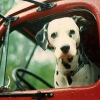

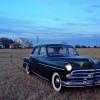
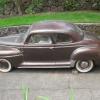
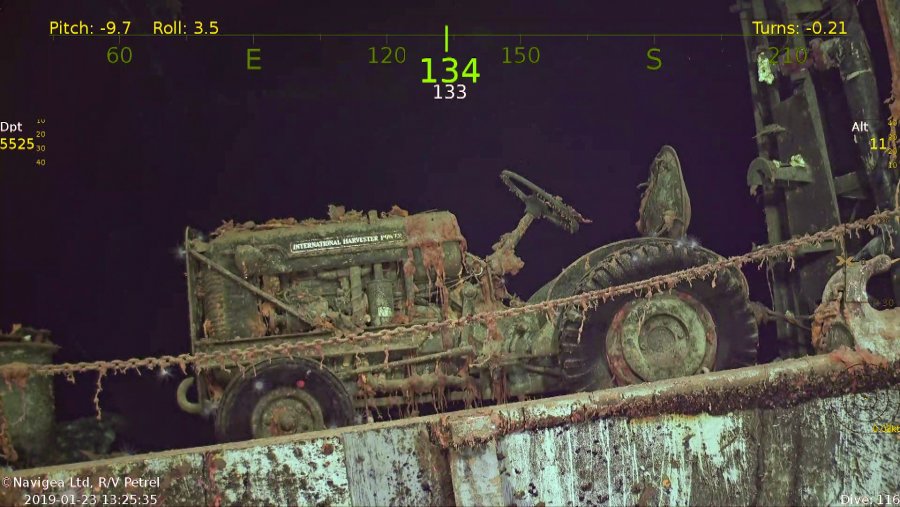
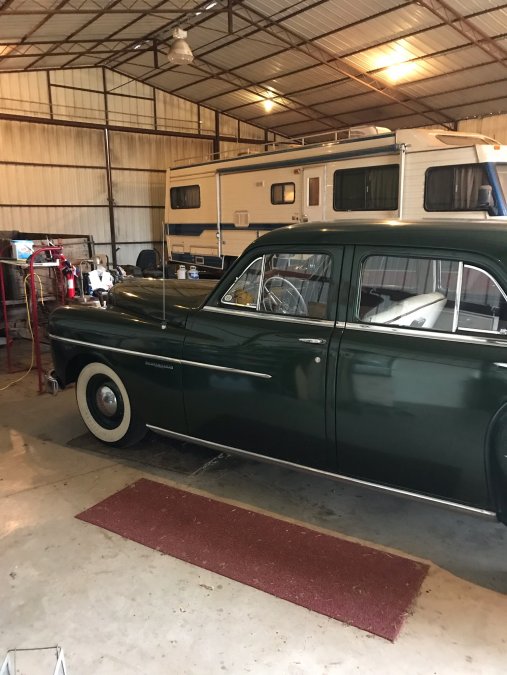
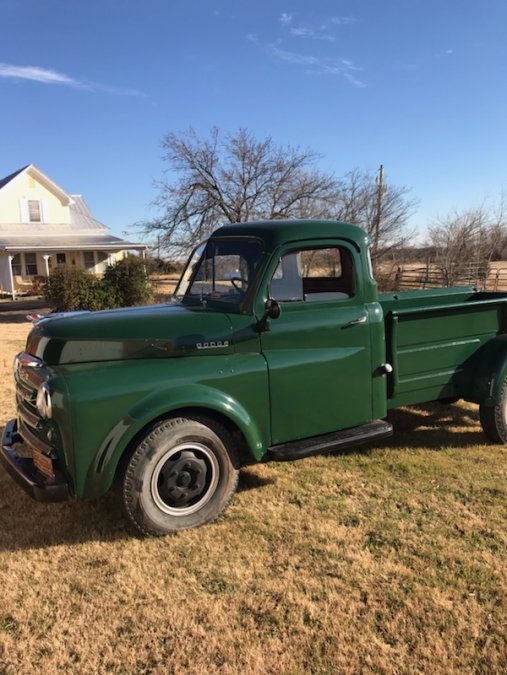
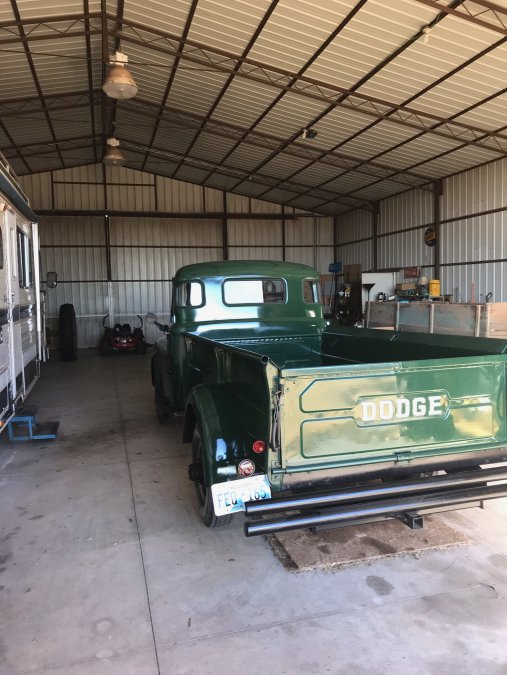


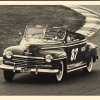


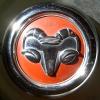
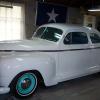
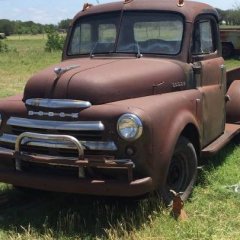
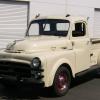

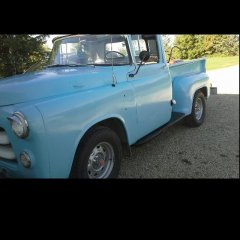
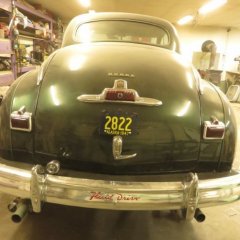
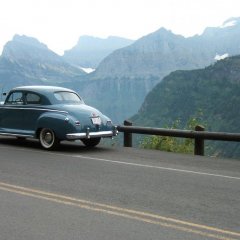
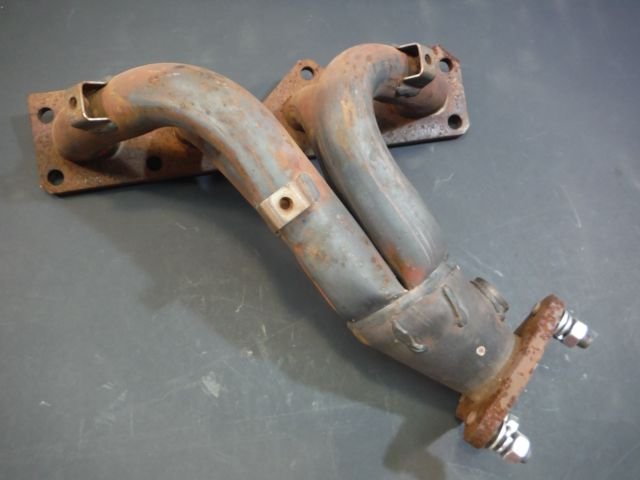


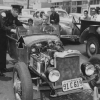
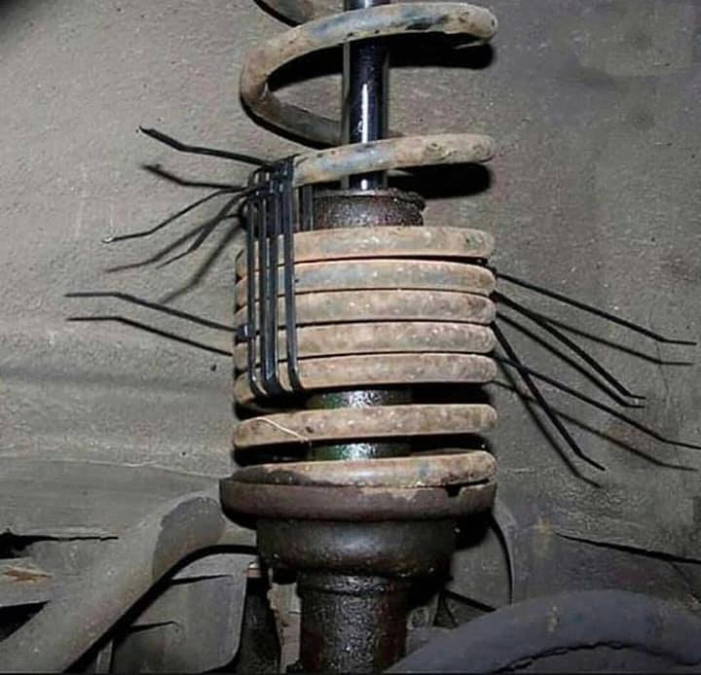
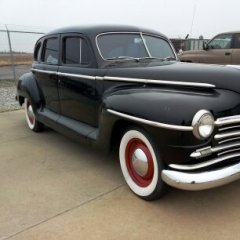
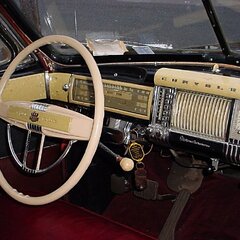
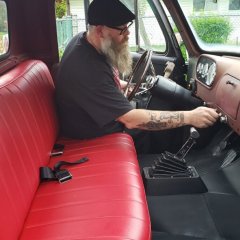

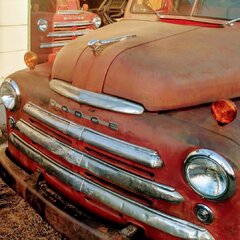

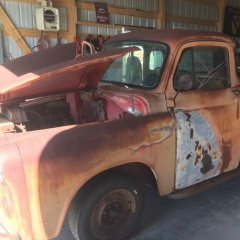


.jpg.2976b64f188cfb0a8589735104311cf6.jpg)

